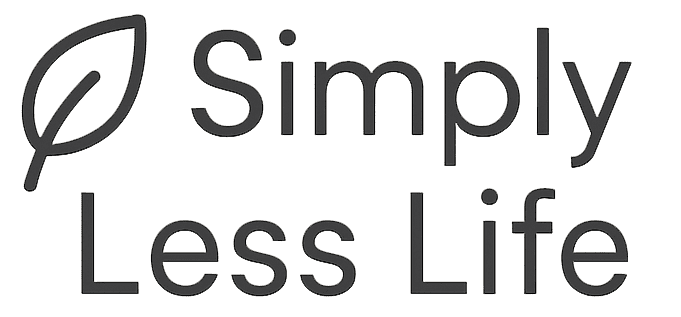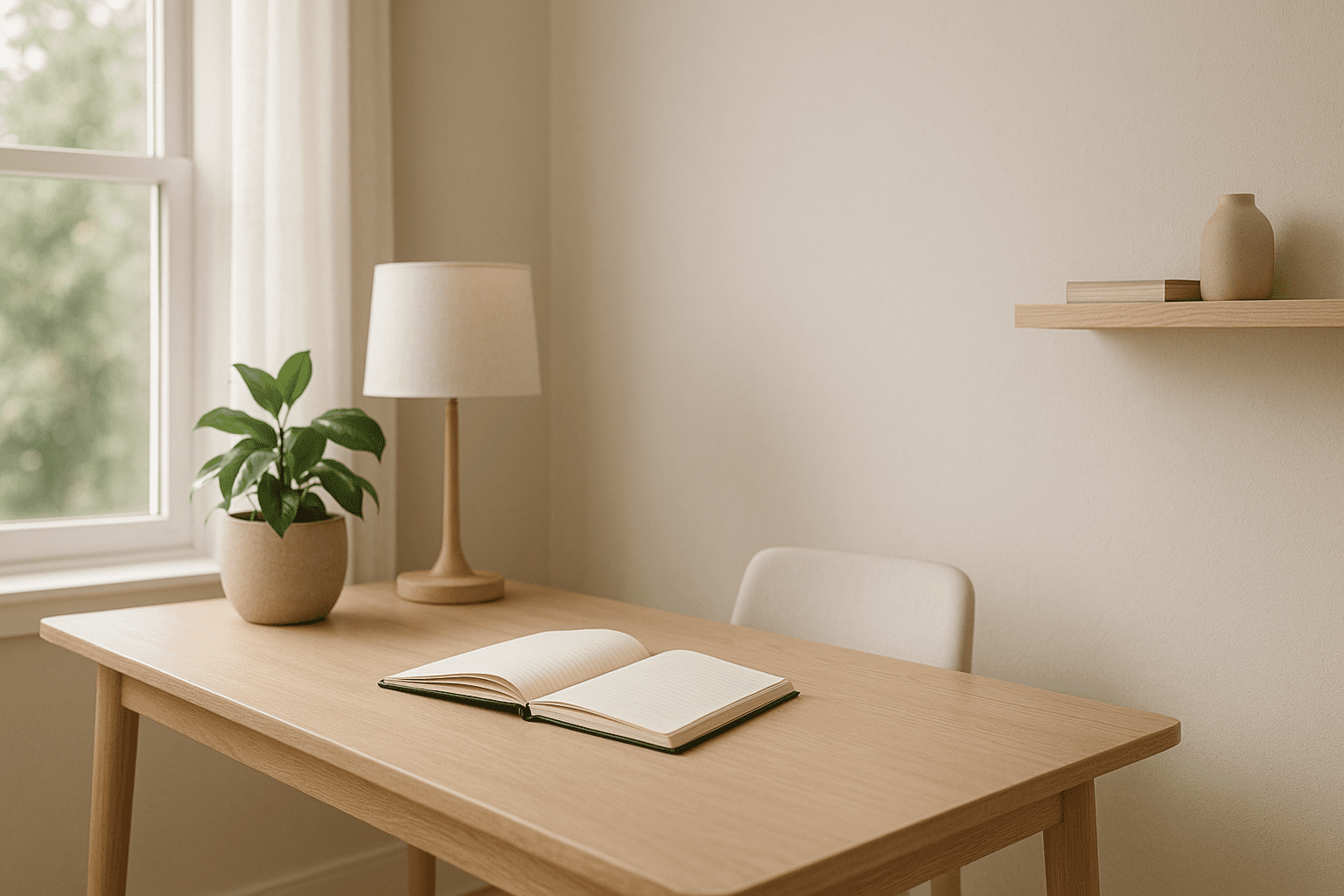Minimalism isn’t about denying oneself comfort or beauty — it’s about making room for what truly matters. For many, the journey toward a minimalist lifestyle starts with decluttering closets or clearing out drawers. But eventually, it shifts into something deeper: a reconsideration of how money is spent and what is brought into the home.
This article walks through ten everyday things many people buy without much thought — things that were once part of daily or seasonal routines — that a minimalist has chosen to stop buying. These aren’t extreme sacrifices or bold statements. They’re quiet, deliberate decisions to live more intentionally, spend less impulsively, and surround oneself with items that serve a purpose or bring genuine value.
Letting go of these purchases didn’t lead to a sense of loss. In fact, it brought a surprising kind of relief — fewer decisions to make, less clutter to manage, and more clarity in everyday life.
Each item on this list is a small example of how less can often feel like more.
1. Decorative Home Accents

One of the first categories to go in a minimalist shift is decorative home accents — those small, often inexpensive items added purely for visual effect. Think ceramic figurines, artificial plants, seasonal signs, or themed throw pillows. These objects fill shelves, cover tables, and change with the seasons, offering a quick sense of style but no real function.
At first glance, they may seem harmless. But over time, they accumulate. They gather dust, require constant rearranging, and visually clutter a space. For many people beginning a minimalist journey, these items stand out as distractions — noise in what should be a calm environment.
By removing decorative extras, a room begins to feel more open. Surfaces become easier to clean. Shelves start to reflect intentional design rather than impulse buys. What’s left is a space that feels lighter and more peaceful — not because it’s empty, but because everything remaining has been chosen with care.
It doesn’t mean the home has to feel bare or cold. A simple plant, a framed photo, or a favorite book can offer just as much character as a dozen trinkets. The difference is that now, these choices are purposeful, not automatic.
Letting go of purely decorative items isn’t about rejecting beauty — it’s about defining beauty in a way that supports daily life rather than complicates it.
2.Trendy Clothes

Fashion moves fast. Each season introduces new colors, cuts, and must-have pieces that flood store racks and online feeds. For years, it felt normal to chase these trends — to buy shirts because they were “in,” to rotate shoes based on the time of year, and to keep adding to an already full closet in the name of staying current.
But minimalist living calls for a different approach. It asks: Do I really need this? Will I wear this often? Does it reflect my actual lifestyle?
When the focus shifts from trend-following to intentional dressing, the value of a simplified wardrobe becomes clear. Clothes are no longer tied to fleeting styles or fast fashion cycles. Instead, they’re chosen for comfort, versatility, and durability. The result is a capsule wardrobe — a small, curated collection of clothing that mixes and matches easily.
Letting go of trendy clothes means fewer regrets after rushed purchases. It means no longer chasing sales for things that won’t be worn more than once. It means learning to appreciate having just enough — a few favorite shirts, a reliable pair of jeans, a jacket that works with everything.
The closet becomes easier to manage. Getting dressed becomes quicker. And surprisingly, personal style starts to shine through — not because it’s loud or trendy, but because it’s authentic and consistent.
Minimalism doesn’t strip away self-expression; it makes it clearer.
3.Duplicate Kitchen Gadgets

Kitchens are one of the most clutter-prone spaces in a home. Over time, drawers fill with tools, gadgets, and utensils that promise to make cooking faster or easier. But in reality, many of these items are used once and forgotten — avocado slicers, melon ballers, egg separators, and spiralizers often end up buried beneath more essential tools.
Minimalism brings a different mindset to the kitchen: less about novelty and more about function. That means letting go of duplicates and single-purpose tools in favor of reliable, multi-use items. A sharp chef’s knife, a sturdy cutting board, a set of measuring cups — these basics can handle almost any task without taking up unnecessary space.
Reducing gadget clutter does more than free up drawers. It makes meal prep smoother and cleanup faster. It helps the cook focus on the ingredients and the process, not the latest tool. And it removes the pressure to constantly upgrade or keep up with kitchen trends.
For those who enjoy cooking, simplifying the tools can actually deepen the experience. There’s something satisfying about knowing exactly where everything is — and knowing it all gets used.
When each item in the kitchen has a purpose, the space becomes not only more functional but more enjoyable.
4.Paper Towels and Napkins
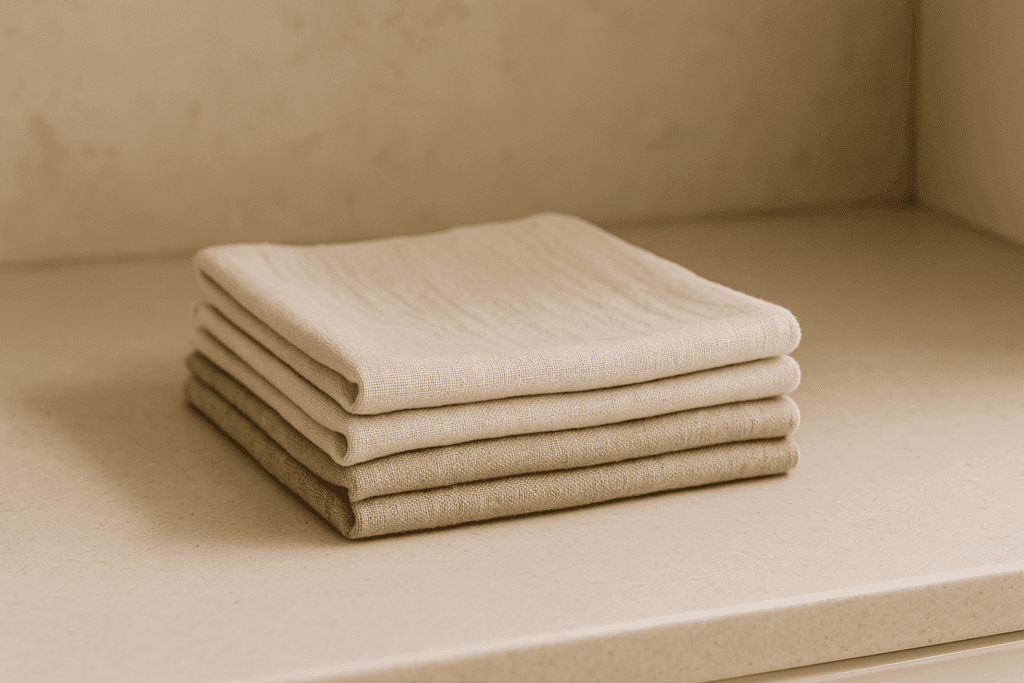
Disposable paper products once felt like a staple in every kitchen and dining room. Easy to grab, quick to toss, and always stocked in bulk, paper towels and napkins were the go-to for spills, meals, and cleaning. But in a minimalist home, even convenience gets questioned — especially when it’s tied to ongoing waste, cost, and clutter.
Switching to reusable cloths is one of the simplest and most sustainable changes in a minimalist lifestyle. A small stack of washable cloth napkins or cleaning rags can do the job just as well — often better. They don’t tear. They don’t run out when needed most. And they don’t require a trip to the store every few weeks.
Over time, the shift becomes second nature. A basket or drawer holds the clean cloths, and another holds the used ones, ready for the next wash. There’s no constant pile of half-used paper towels sitting on counters. No overflowing trash from single-use cleanup.
Financially, the switch pays off too. Even inexpensive paper towels add up over a year, while a few sets of durable cloths last for years.
It’s not about perfection. It’s about choosing solutions that support a simpler, more intentional routine — one less dependent on disposables and more rooted in thoughtful habits.
5.Backup Toiletries
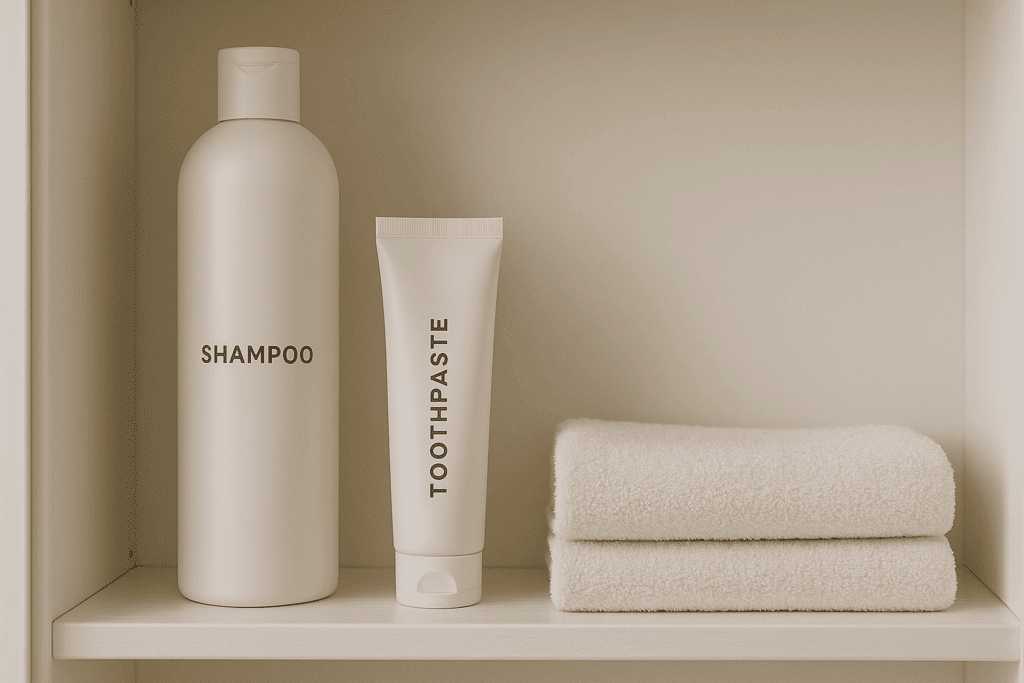
It’s easy to fall into the habit of stocking up on toiletries — buying extras of shampoo, toothpaste, lotion, and deodorant “just in case.” Drugstore sales and bulk deals make it seem practical. But before long, cabinets overflow with half-used bottles, forgotten products, and items that expire before they’re opened.
In a minimalist lifestyle, backup toiletries are one of the first categories to be simplified. The shift comes from asking: Do I really need this much on hand? Often, the answer is no.
The new approach is simple: use what’s already open, replace only when necessary, and keep one backup at most — if any. Instead of storing six tubes of toothpaste, one or two will do. Instead of grabbing every new product out of curiosity, decisions are based on actual need and experience.
This change not only clears physical space but also mental space. No more digging through crowded bins or discovering duplicates. No more guilt over wasting money on unused items. And no more impulsive restocks that only add to the clutter.
A minimalist bathroom cabinet feels light and easy. Every product is visible, current, and used. It’s not about having less for the sake of it — it’s about having exactly what’s needed, nothing more.
6.Cheap Electronics and Accessories
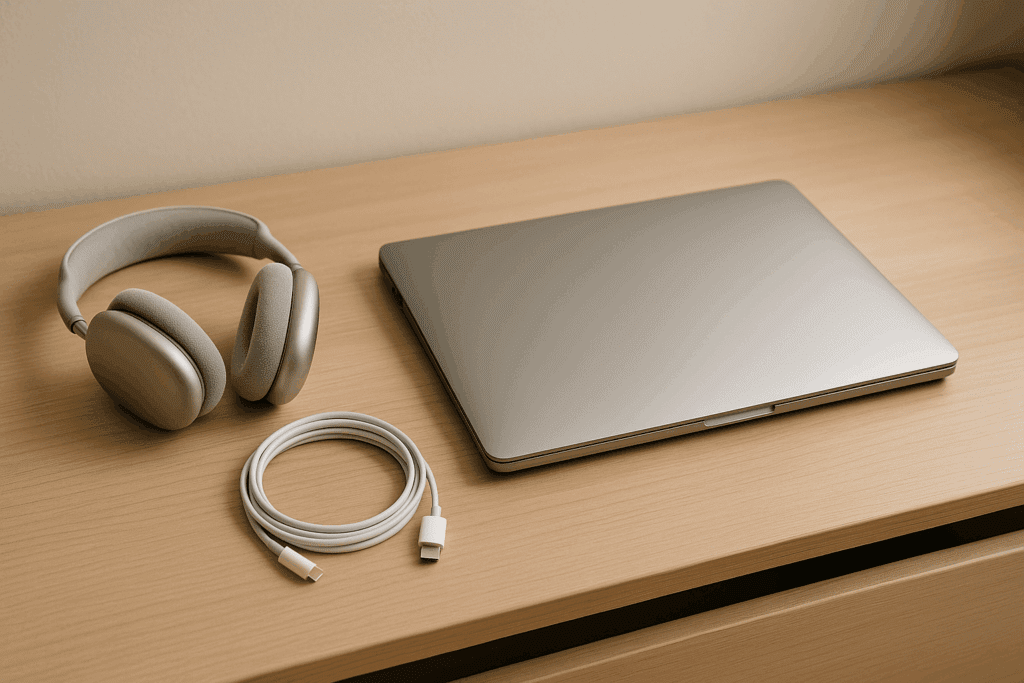
In a world where new gadgets are released constantly, it’s easy to get pulled into the cycle of buying cheap electronics. Phone chargers, Bluetooth speakers, earbuds, or desk lamps — often chosen for their low price and instant convenience — tend to break, underperform, or go unused shortly after purchase.
Minimalism encourages a shift away from quantity toward quality. Instead of buying the cheapest version and replacing it repeatedly, the focus becomes choosing well once. A reliable pair of headphones, a long-lasting phone cable, or a sturdy power bank ends up saving money, reducing frustration, and eliminating waste.
This mindset applies to accessories too. Minimalists often stop collecting piles of phone cases, laptop stands, or USB gadgets that seem useful in theory but don’t serve a real function day to day. Every item is evaluated for how often it’s used, how well it performs, and whether it actually improves life.
By letting go of cheap tech clutter, drawers get lighter. Cables stop tangling. There’s no longer a need to troubleshoot flimsy gear or constantly replace broken parts. What remains is gear that works, lasts, and actually fits into daily habits.
Minimalism doesn’t reject technology. It just filters it through a lens of purpose.
7.Books I’ll Never Read
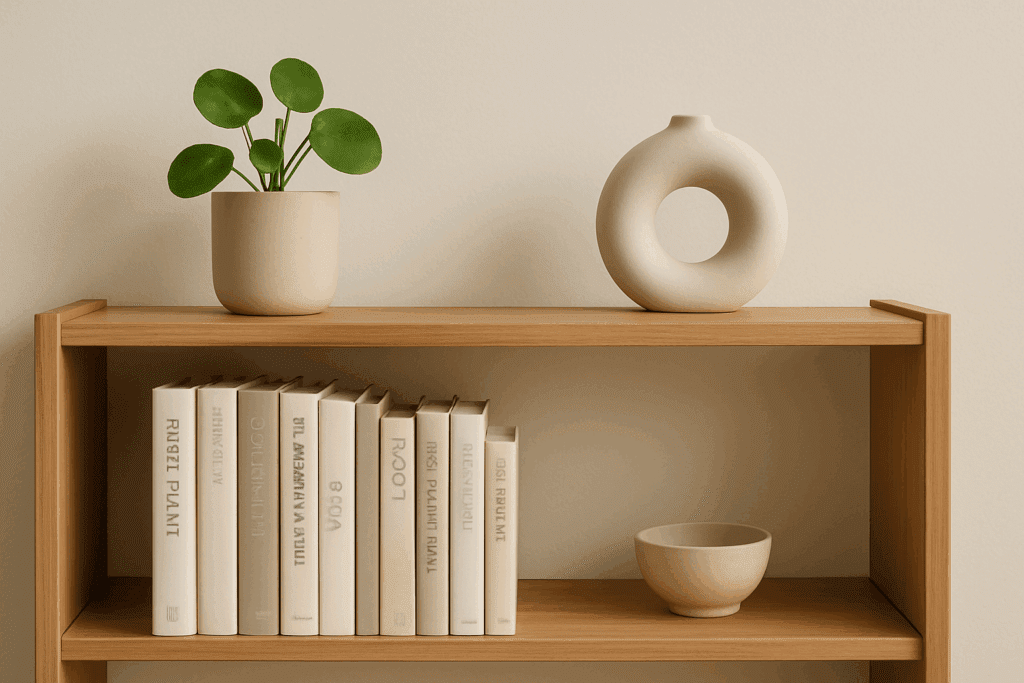
Books carry emotional weight. They symbolize learning, identity, and even status. For many, owning shelves full of unread books feels like a badge of intelligence or intention. But in a minimalist lifestyle, that shelf becomes something else — a quiet reminder of unfinished tasks, misplaced expectations, or impulse buys.
The shift begins with an honest question: Will I ever actually read this? If the answer is no, the book becomes clutter. If it was bought for decoration or out of obligation, it’s just another object taking up space.
Minimalism doesn’t reject books. It refocuses the relationship. Instead of stockpiling them, minimalists borrow from libraries, read digital copies, or maintain a small, intentional collection of titles that bring real value. Each book kept is one that’s either well-loved, reread, or ready to be used.
Letting go of unread books doesn’t mean letting go of knowledge or growth. It means releasing the guilt that comes with shelves full of good intentions and making room for deeper engagement with the content that matters most.
What’s left is a smaller library — but one filled with meaning, not noise.
8.Seasonal Decorations
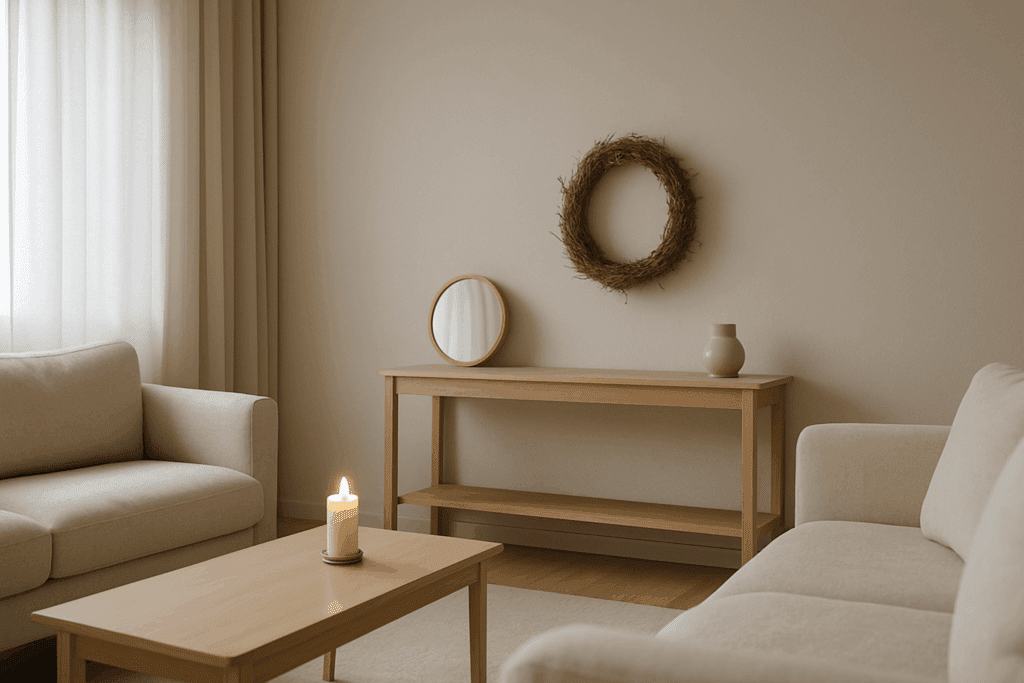
Decorating for each season once felt like a fun tradition — pumpkins in October, snowflakes in December, pastel wreaths in spring. But over time, this routine became more about storage than celebration. Boxes filled with ornaments, themed pillows, and garlands took up space year-round for just a few weeks of use.
Minimalism challenges this cycle by asking what truly brings joy versus what feels like an obligation. Seasonal décor often falls into the second category. It requires storage, setup, takedown, and a place to keep it all — not to mention money and time to update it each year.
Rather than eliminating all celebration, minimalists often choose to simplify. A single autumn candle, one winter garland, or a neutral decoration that works across seasons can still mark the time of year without overwhelming the space. This approach keeps the home peaceful and avoids the visual overload of constant rotation.
The benefit goes beyond aesthetics. Fewer decorations mean fewer decisions, less pressure to “keep up,” and more focus on meaningful traditions rather than objects. When seasonal changes are observed through experience — not excess — they feel more personal and memorable.
9.Subscription Boxes and Services
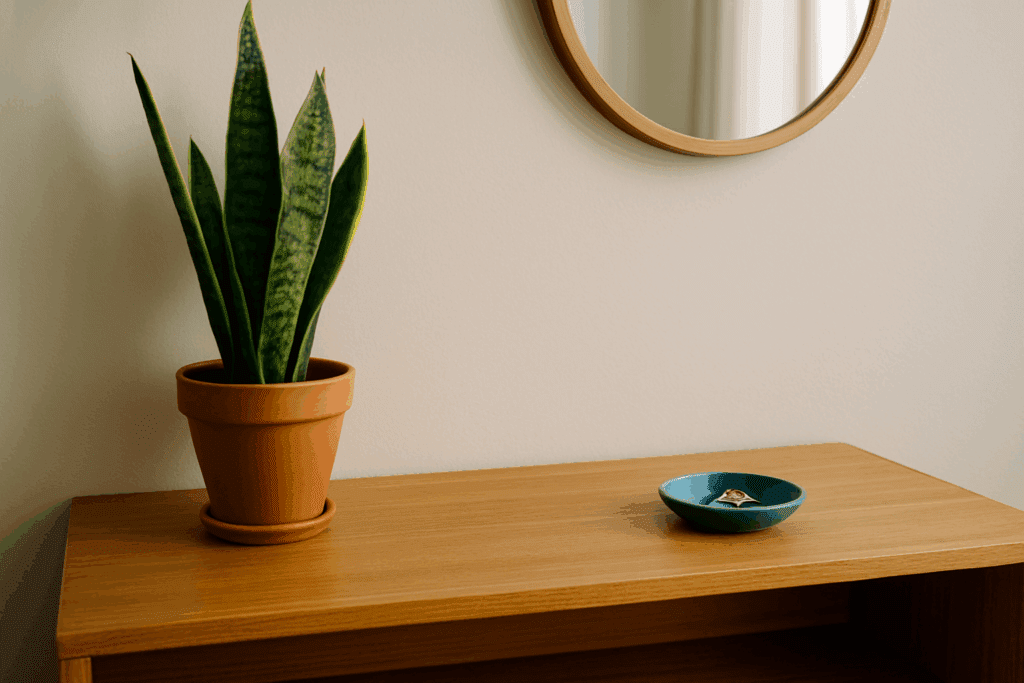
Subscription boxes promise convenience and surprise — curated selections of beauty products, snacks, books, or lifestyle items delivered monthly. At first, they feel exciting. But over time, the novelty wears off, and the items begin to pile up.
Minimalists often cancel these subscriptions not because the products are bad, but because the habit becomes passive consumption. Each delivery brings more stuff that may not be needed, liked, or used. Products end up in drawers, given away, or worse — thrown out.
By opting out, the control shifts back to the individual. Instead of letting a company decide what arrives each month, purchases become intentional. There’s no pressure to “use up” what’s been sent or feel guilty for wasting items. The budget opens up. The mail becomes simpler. The home stays lighter.
This doesn’t mean avoiding all recurring services — just evaluating them. A music or cloud storage subscription might serve a purpose. A monthly box of makeup samples or socks might not. Minimalism encourages pausing before auto-renewing and asking: Do I really use this? Would I buy this again?
Often, the answer leads to freedom — and less clutter on both the calendar and the shelf.
10.Souvenirs and Travel Trinkets
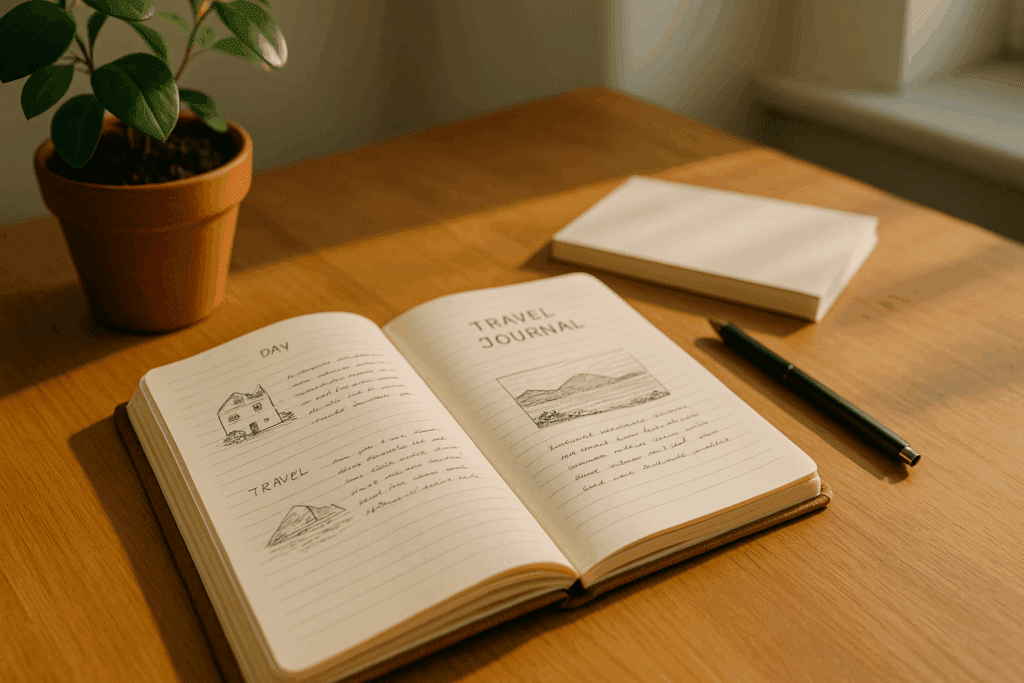
Travel often comes with the temptation to bring something back — mugs from cafés, magnets from cities, small statues from gift shops. These items seem like harmless reminders of a good trip. But over time, they accumulate, becoming a patchwork of half-remembered experiences scattered across shelves.
In a minimalist lifestyle, souvenirs are one of the first sentimental categories to be reconsidered. Not because memories don’t matter — but because meaningful memories don’t require physical proof.
The decision to stop buying travel trinkets often brings unexpected relief. It means no more luggage space sacrificed for fragile items. No more stress about keeping souvenirs safe or clean. And no more guilt when they inevitably end up in storage.
Instead, travel memories are preserved through photos, journaling, or simply being present in the moment. Some choose to collect experiences — trying a local dish, visiting a quiet street, or having a meaningful conversation — rather than objects.
This shift turns travel into something deeper. It’s no longer about what’s brought home, but about what’s carried within.
Conclusion
Choosing to stop buying certain things doesn’t mean giving up joy or comfort. It means redefining both.
Minimalism isn’t about rules. It’s about clarity. Each item removed — whether it’s a trendy shirt, an unused gadget, or a forgotten souvenir — creates space for something else: peace, focus, intention. In that space, daily life becomes easier to manage, and values become easier to see.
These ten categories weren’t eliminated all at once. Each decision came from a small moment of noticing: I don’t use this, I don’t miss that, I feel lighter without it. Over time, those choices added up to a home that reflects what’s truly needed — and nothing more.
Readers don’t need to follow the same list. But it’s worth asking: What am I holding onto out of habit, not purpose? The answers might be simple. The impact often isn’t.
To help start that reflection, we’ve created a free “Things to Stop Buying” self-checklist, designed to make the process easier and more personal.
